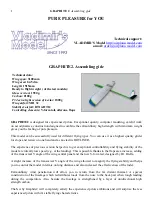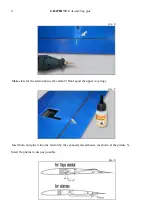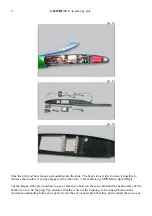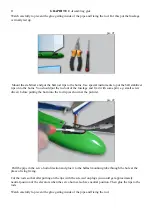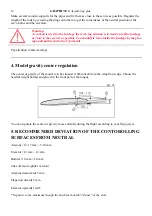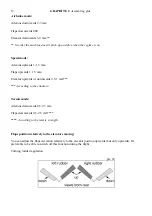
1
GRAPHITE 2
.
Assembling gide
PURE PLEASURE for YOU
Technical support:
VLADIMIR'S Model
http://airplane-model.com
e-mail:
order@airplane-model.com
GRAPHITE2. Assembling gide
Technical data:
Wing span:
3100 mm
Wing area:
64.5 dm
Length:
1515mm
Ready to flight weight ( of the test models):
Glass version:
1920 g.
Carbon:
2100 g
F3J extra light version of kevlar:
1800g
Wing airfoil:
MH 32
Stabilizer airfoil:
HT14-HT12
Controlling elements:
V-form tail, ailerons, flaps
GRAPHITE2
is designed for experienced pilots. Exceptional quality, computer modeling, careful work
on aerodynamics, construction designed to combine the extraordinary high strength with minimum weight
gives you the feeling of pure pleasure.
This model can be successfully used for different flying types. You can use it as a highest quality glider
for slope and termic on one hand and as an electric HOTLINER.
The experience of previous version helped us to get exceptional controllability and flying stability of the
model at critically low speed (e.g. at the landing). This is possible thanks to the flaps area increase, adding
of the transversal V angle of the wing central panel and the new V-form tail, designed by Dr. Drella.
A slight increase of the transversal V angle of the wing allowed to magnify the flying stability and helps
you to control the model in termic on long distance and also increased the effectiveness of the ruder.
Extraordinary wind penetration will allow you to return from the far distant thermal. A special
construction of the fuselage which redistributes loads from the nose to the back part when tough landing
during the competition. Also, besides the fuselage is strengthened by a layer of unidirectional high
strength carbon.
That's why Graphite2 will completely satisfy the experienced pilots ambitions and will surprise the less
eaperienced pilots with it's stable flying characteristics.

